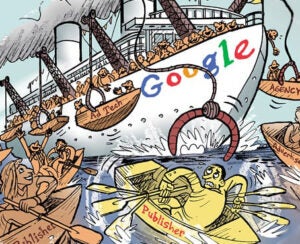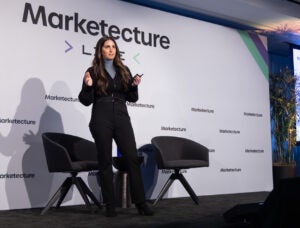 “Brand Aware” explores the data-driven digital ad ecosystem from the marketer’s point of view.
“Brand Aware” explores the data-driven digital ad ecosystem from the marketer’s point of view.
Today’s column is by Mike Zeman, director of North American digital marketing at Netflix.
Numerous studies have outlined the importance of impactful creative in successful advertising campaigns. Many have shown that creative variables, such as messaging, formats and aesthetics, account for more than half of the total sales impact of a campaign, with less than 50% due to media variables such as targeting, weight, etc.
So, why is it that – unlike TV and print – creative consistently takes a back seat to media (inventory and targeting) in the digital space? Why is creative often an afterthought where agencies are given too little time to do great creative work or assets are handed over to publishers just hours before a campaign is meant to launch?
I don’t necessarily know the answer but I do have two hypotheses:
- Digital ads are simply not as sexy as audio/visual ads, especially TV spots.
- It doesn’t cost a half million to produce a digital ad like it does a TV spot.
Both of these dynamics equate to a lack of marketer focus on digital creative, particularly in comparison to the potential multimillion-dollar media campaign it will run on.
While this is not news, it is a shame as programmatic buying continues its progression. RTB has opened up entirely new possibilities for aligning a message to a consumer and his or her context.
Never before has the adage of “right message to right user at the right time” been more in reach. In fact, it has been made even more powerful by the technologies the programmatic media ecosystem has brought to bear. A marketer who chooses to could employ a strategy of “right message to the right person at the right time on the right device on the right operating system at the right geofenced location during the right weather conditions …” In other words, the possibilities of highly relevant, “context-aware” advertising have never been greater. And yet, a one-size-fits-all creative strategy largely reigns supreme.
Along those lines, here are some specific obstacles to overcome.
- Many of the programmatic advertisers and agencies with whom I have spoken are at the mercy of assets created for direct buys. In other words, they do not have creative budgets allocated to their channels and must simply reuse what was already developed.
- The open exchange ecosystem lacks a breadth of rich media formats. While some firms, such as Skinected, are doing a good job of evolving this space, there are both technical issues (limits of those pesky cross-domain iFrames) and philosophical issues (publishers not opening up premium formats) that require further work.
- There remains a lack of integration between the rich media purveyors and the third-party data provisioners. What marketers are looking for is a one-stop shop for dynamic creative (leveraging one IO to cover thousands of potential data attributes in a dynamic creative ad unit). This is happening in pockets but has a long way to go.
While these industrywide issues won’t be resolved overnight, there are few things marketers can do to address individual situations:
- Reposition the digital creative conversation. Turn the dialogue away from the relatively low cost of producing digital assets and toward the opportunity (and opportunity cost) around the value of your creative. (If you believe the stat in the opening paragraph, 50% of your working media investment is the true value at stake.)
- Think about creative production budgeting in two ways: creative for environments and creative for audiences. As most advertisers leverage both placement-driven buys and target-driven buys, appropriate funding should be set aside for both.
- Work with your rich media provider(s) to better integrate with third-party data providers/DMPs (and with your own first-party data if appropriate). Sticks may work to force the integration but carrots are always better (“We will commit to X on an integrated solution if it means only one IO, one primary POC, one integrated set of reports, etc.”)
- Turn to programmatic direct to unlock additional rich media opportunities. This includes not only additional ad sizes, but ad formats that break the creative limits, such as file size and expand constraints, to which the space has been largely beholden.
In the end, great creative can overcome a poor media plan. But I don’t think the opposite is true. Those that can marry the two (resonant creative which is environment-aware) stand to gain a huge advantage in the minds and wallets of consumers.
Follow Netflix (@Netflix) and AdExchanger (@adexchanger) on Twitter.












